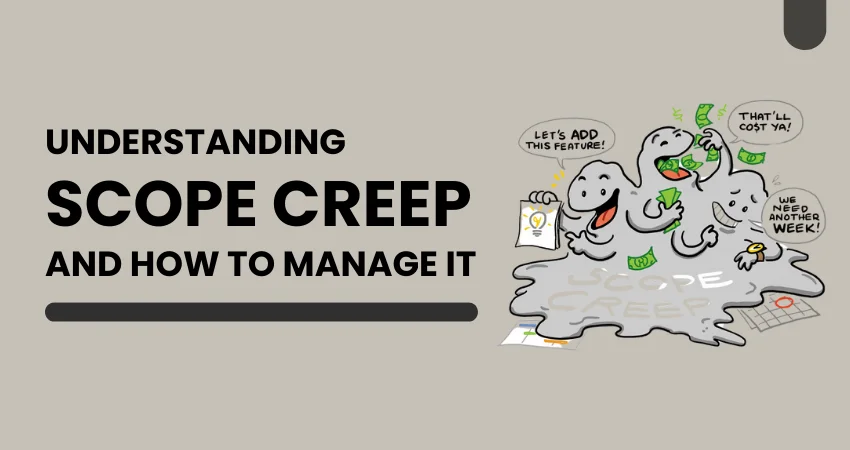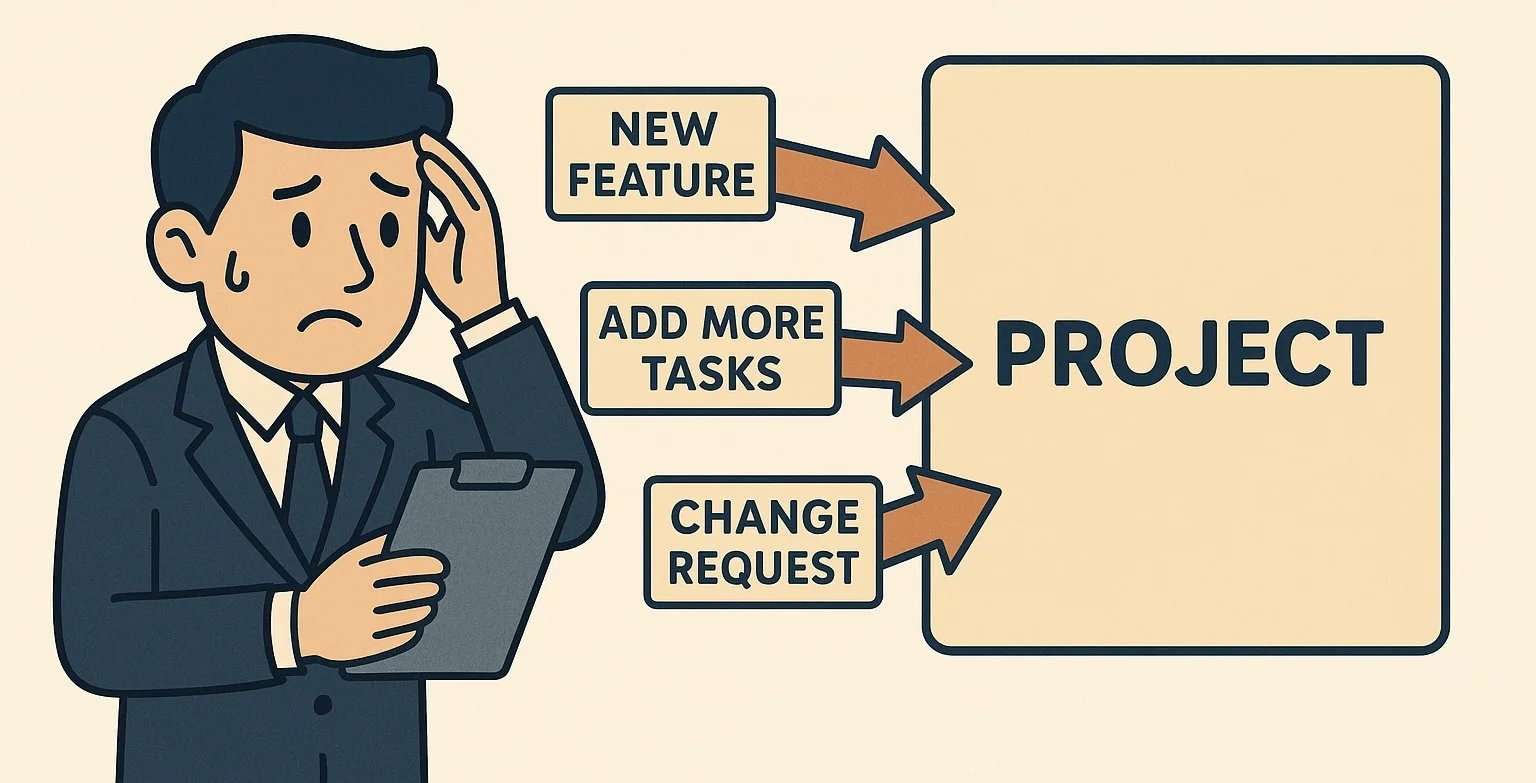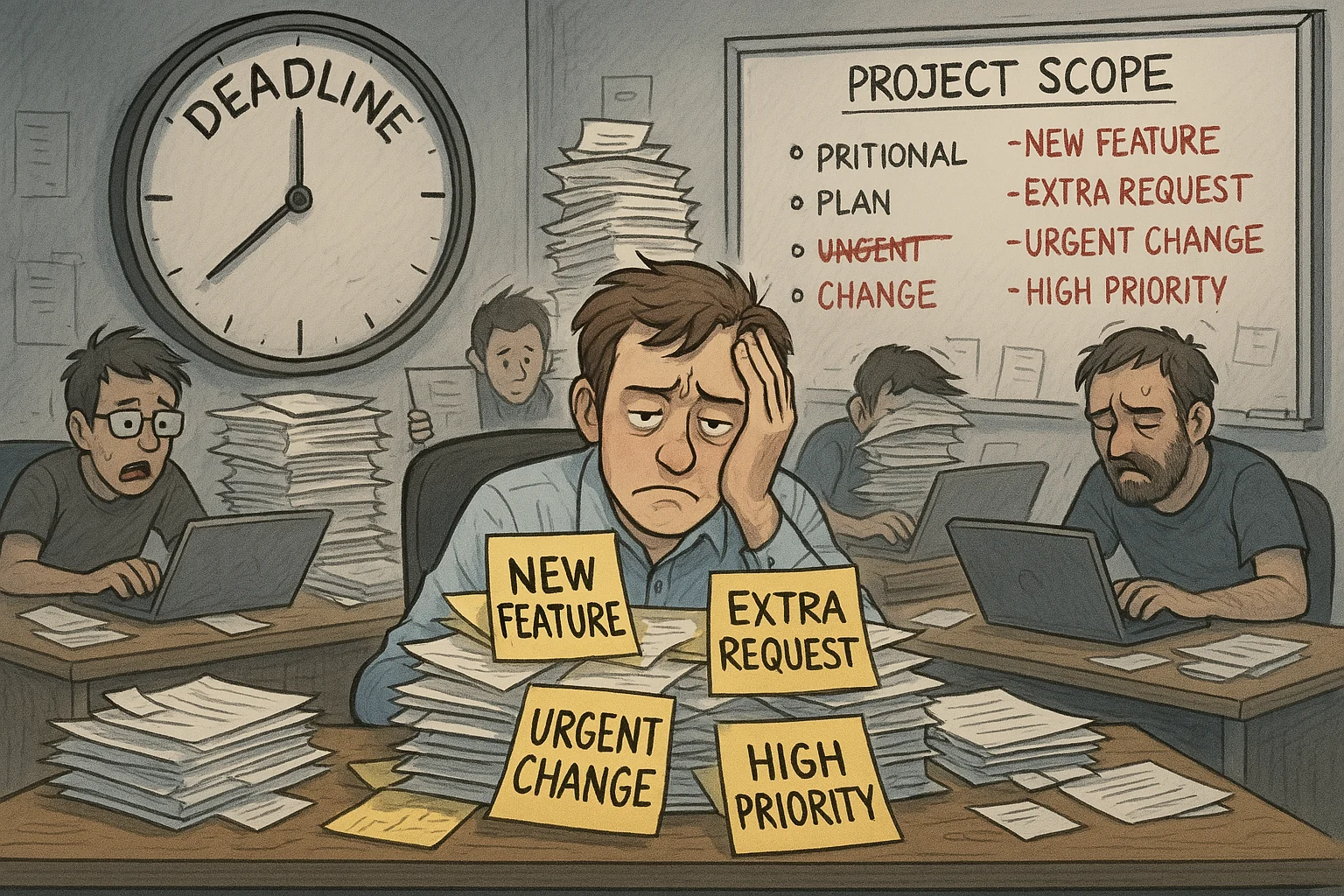Understanding Scope Creep and How to Manage It

Scope creep, also known as requirement creep, refers to changes, continuous or uncontrolled growth in a project’s scope, at any point after the project begins. This phenomenon can occur when the scope of a project is not properly defined, documented, or controlled. It is generally considered harmful and should be avoided.

What is Scope Creep?
Scope creep occurs when additional features or functions are added to a project that were not part of the original scope. These additions can happen gradually over time, often seemingly small and insignificant, but they can accumulate and significantly impact the project's timeline, budget, and resources.
Common Causes of Scope Creep
- Underestimating project complexity
- Lack of clear requirements
- Miscommunication between stakeholders
- Poor initial scope definition
- Changing stakeholder requests
- Lack of change control processes
Why Scope Creep Matters?
Scope Creep matters significantly because it impacts all stakeholders from Client to Team.
- Budget Overruns Unplanned additions require extra resources, tools, or labor, leading to cost increases beyond the initial budget.
- Project Delays Additional work means extended deadlines, affecting project delivery and potentially causing a domino effect on dependent tasks.
- Resource Strain The team may become overwhelmed with unplanned tasks, leading to burnout, reduced productivity, and decreased morale.
- Reduced Project Quality Adding features or requirements without proper assessment can lead to rushed work, poor execution, and higher chances of defects.
- Stakeholder Dissatisfaction If expectations are not properly managed, stakeholders may become frustrated when promised deliverables take longer or require additional funding.
- Increased Risk and ComplexityUncontrolled scope expansion makes it harder to track progress, manage risks, and ensure alignment with business goals.
- Potential Project Failure In extreme cases, excessive scope creep can make a project unviable, leading to its cancellation or a final product that doesn’t meet its intended purpose
How to avoid Scope Creep
- Get a full understanding of the project before defining the scope.
- When setting deadlines be flexible so that you are prepared for minimal changes in the requirements
- Define Clear Requirements – Ensure a well-documented and approved project scope.
- Have a constant communication channel open among the Team. For example, conduct a meeting twice a week focusing solely on the Change requirement at hand.
- Manage Stakeholder Expectations – Set clear boundaries for what is in scope and what is not.
- Focus on the Minimum Viable Product so as to put a boundary for the scope.
How to Manage Scope Creep If It Happens
- Assess the Impact – Evaluate how the change affects time, budget, and resources.
- Negotiate Trade-offs – If adding new requirements, consider removing or deferring others.
- Escalate When Needed – If scope changes threaten project success, involve decision-makers.
- Rebaseline the Project Plan – Update timelines and costs to reflect the changes.

Conclusion
Managing scope creep is crucial for successful project management. By defining a clear scope, documenting detailed requirements, implementing change control processes, and communicating effectively, a team can minimize the risk of scope creep and ensure projects are completed on time and within budget.